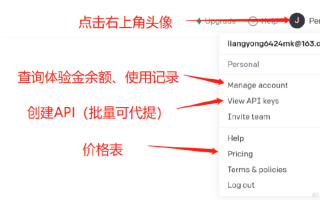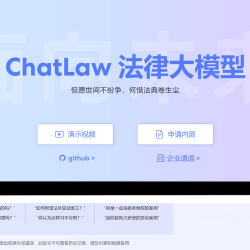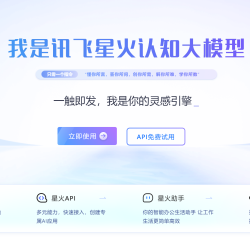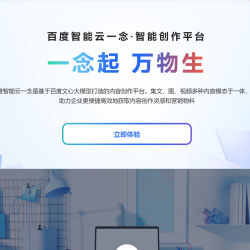Building Autonomous Business Processes using AI Agent Workflows
使用 AI 代理工作流程构建自主业务流程
Agent Workflows provide an efficient solution to one of the most pressing challenges faced by businesses today — Automating the business processes that usually require knowledge workers to put relentless hours on repetitive tasks. This can be solved by using Agent Workflows, which allow agents to autonomously execute repetitive tasks, reduce errors & scale operations. This allows knowledge workers to focus on more creative tasks and solve complex problems, which can eventually improve the overall organization’s operational efficiency.
代理工作流程为当今企业面临的最紧迫的挑战之一提供了有效的解决方案 – 自动化通常需要知识工作者在重复性任务上投入大量时间的业务流程。这可以通过使用代理工作流来解决,该工作流允许代理自主执行重复任务、减少错误并扩展操作。这使得知识工作者能够专注于更具创造性的任务并解决复杂的问题,最终可以提高整个组织的运营效率。
Understanding Agent Workflows
了解代理工作流程

Agent Workflows are a pre-defined set of ReAct LLM architecture steps that an AI agent can execute in a loop and autonomously iterate each step using LLM. Existing business operation playbooks can be translated into Agent workflows — allowing AI agents to execute these tasks and run on auto-pilot.
代理工作流是一组预定义的 ReAct LLM 架构步骤,AI 代理可以循环执行这些步骤,并使用 LLM 自主迭代每个步骤。现有的业务运营手册可以转换为代理工作流程——允许人工智能代理执行这些任务并自动运行。
One such example of Agent workflow can be Sales Engagement Workflow. This agent workflow allows AI agents to act as an SDR/BDR for mining prospects’ data and then drafting a personalized cold reach-out message to engage with them. Following the below steps:
代理工作流程的一个这样的示例是销售参与工作流程。该代理工作流程允许人工智能代理充当 SDR/BDR 来挖掘潜在客户的数据,然后起草个性化的冷联系消息来与他们互动。请按照以下步骤操作:
- Filter potential prospects using apollo.io and save it as a CSV containing the prospect name, LinkedIn profile, email & company name
使用 apollo.io 筛选潜在潜在客户并将其保存为包含潜在客户姓名、LinkedIn 个人资料、电子邮件和公司名称的 CSV - Read the prospect’s data from the CSV generated or manually uploaded via the resource manager
从生成的或通过资源管理器手动上传的 CSV 中读取潜在客户的数据 - Research about each prospect’s company
研究每个潜在客户的公司 - Draft a highly personalized email using the outputs from the research
使用研究结果起草一封高度个性化的电子邮件 - Sends the email to the respective email ID Repeat the process for each row in the CSV in a loop
将电子邮件发送到相应的电子邮件 ID 循环中对 CSV 中的每一行重复此过程
Sales Engagement through Agent Workflow
通过代理工作流程进行销售参与

Sales Engagement Workflow by the Agent
代理商的销售参与工作流程
Another example of agent workflow can be HR and Talent Acquisition Workflow — This workflow can autonomously analyse the CVs (pulled from a source or manually uploaded via resource manager), compare them with the Job description, shortlist the candidates, and draft a confirmation message to the candidates.
代理工作流程的另一个例子是人力资源和人才招聘工作流程——该工作流程可以自动分析简历(从来源提取或通过资源管理器手动上传),将其与职位描述进行比较,列出候选人名单,并起草确认消息候选人。
Similarly, More such Agent workflows can be built to autonomously execute various business processes including Marketing Operations, Customer Support, Data Analysis and many more…
同样,可以构建更多这样的代理工作流程来自主执行各种业务流程,包括营销运营、客户支持、数据分析等等……
Creating Your Custom Agent Workflow
创建您的自定义代理工作流程
One can easily create an agent workflow by making changes to the workflow_seed.py and main.py files in the SuperAGI repository. There are four key aspects to creating an agent workflow:
通过更改 SuperAGI 存储库中的 workflow_seed.py 和 main.py 文件,可以轻松创建代理工作流程。创建代理工作流程有四个关键方面:
input_instruction: Defines what each step is intended for.input_instruction:定义每个步骤的用途。output_instruction: Defines the outcome of each step.output_instruction:定义每个步骤的结果。TASK_QUEUE: Enables looping in the workflows.TASK_QUEUE:在工作流程中启用循环。WAIT_FOR_PERMISSION: Asks for approval and feedback from the user. For every step in the workflow, the previous step’s output acts as the input for the current step.WAIT_FOR_PERMISSION:请求用户的批准和反馈。对于工作流中的每个步骤,上一步的输出将充当当前步骤的输入。
Step-by-step Guide 分步指南
- Clone the SuperAGI GitHub repository and navigate to the superagi/agent/workflow_seed.py file.
克隆 SuperAGI GitHub 存储库并导航到 superagi/agent/workflow_seed.py 文件。

2. Set up your workflow’s method name and define the workflow name in the parameters in the method.
2. 设置工作流程的方法名称并在方法的参数中定义工作流程名称。
3. Assign step numbers at both places as shown; these are the identifiers of the steps.
3. 如图所示在两个地方分配步骤编号;这些是步骤的标识符。
4. Use step_type="TRIGGER" to identify the first workflow step. Make sure to include only one trigger in a workflow.
4. 使用 step_type="TRIGGER" 标识第一个工作流程步骤。确保工作流程中仅包含一个触发器。
5. Define the tool that you want to use in the workflow steps. The tool name should match what’s defined in the BaseTool class.
5. 定义要在工作流程步骤中使用的工具。工具名称应与 BaseTool 类中定义的名称匹配。

6. To use the TASK_QUEUE, you don’t need to make any changes to the tool name and input instructions. The looping works when t
原文链接:https://blog.csdn.net/universsky2015/article/details/136955126?ops_request_misc=%257B%2522request%255Fid%2522%253A%2522171851494916800197055102%2522%252C%2522scm%2522%253A%252220140713.130102334.pc%255Fblog.%2522%257D&request_id=171851494916800197055102&biz_id=0&utm_medium=distribute.pc_search_result.none-task-blog-2~blog~first_rank_ecpm_v1~times_rank-3-136955126-null-null.nonecase&utm_term=AI%E7%AE%80%E5%8E%86






























































评论 ( 0 )